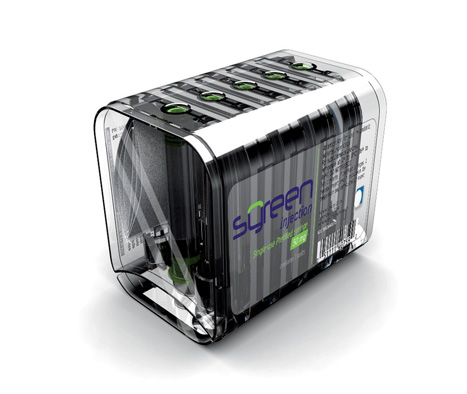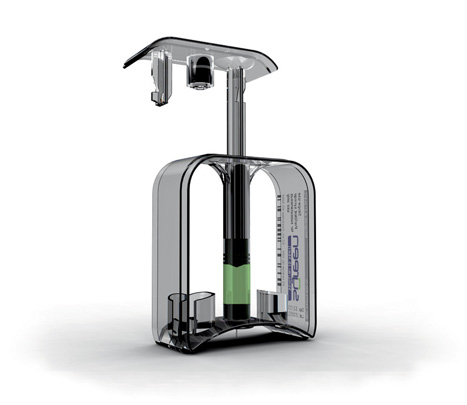
The UK Coalition government is pressing on with a radical shake-up of the NHS despite opposition from unions, health academics and MPs. No one, it seems, can agree on what needs to be done with one of Britain’s best-loved institutions, but everyone is keen for something to change.
Last month’s report by the National Audit Office (NAO) into the NHS’s spending habits made for interesting reading. Much of the press coverage focused on the revelation that 61 trusts bought 652 different types of medical gloves and 21 types of A4 paper between them. This spending comes at a time when the NHS is hoping to make £20bn of savings, which health secretary Andrew Lansley wants to reinvest more effectively.
The NAO believes that £500m of this total could be saved as a result of hospitals improving the way they buy their supplies. Dig a little deeper, however, and it’s not just procurement habits that could provide a relatively simple solution that would help the Department of Health’s money troubles. Waste is another big issue, and one that could be curbed relatively easily, according to Serge Roux, an industrial designer with technology group Cambridge Consultants.
’The figures are frightening,’ he said. ’In the US where I’m based, we produce more than 66,000 tonnes of medical waste per day, equalling two million tonnes per year. Around 85 per cent of that is non-hazardous, which means that people just throw things away in bulk. In today’s economy this is less acceptable and that’s why there needs to be a shift in thinking…People in the medical industry get shielded behind the fact that it is not their priority - for them, patient safety and support comes first, but the two don’t have to be incompatible.’
Roux, a mechanical engineer who now specialises in industrial design, has set out to prove just how simple sustainable healthcare can be. By following the principles of ecodesign to fully understand the lifecycle of a product, he believes that engineers could play a vital role in helping medical authorities save both money and the environment. Two years ago, he came up with a product that he believes demonstrates this concept. Named the Syreen (short for syringe and green), he claims that his product could save millions of pounds in the NHS.
Syreen is a disposable syringe that acts as the primary drug container and the packaging
’Syreen is a pre-filled disposable syringe that acts as both the primary drug container for an injection and the secondary packaging,’ said Roux. ’We knew instantly that it would work and it could change the way we view drug delivery.’ Most of the product is made of a relatively new material known as Cyclic Olefin Polymer (COP), which has the inertial property of glass but can be injection moulded as a single part. Because the design eliminates the need for a separate box, the single syringe reduces packaging volume by more than 50 per cent and weight by 30 per cent compared with traditional pre-filled syringes.

As well as cutting out packaging, the overall shape is a parallelepiped (also known as a rhomboid), allowing each Syreen syringe to nest together and leaving a space just large enough to fit an instruction leaflet. The remainder of the space is taken up by the plunger, which doubles up as a safety cap to save space. Clicking the plunger out and placing it on top of the syringe allows the rest of the packaging to be used as a rigid surface that will limit the depth of insertion and provide a stable bearing point for injection. Since Syreen is made mostly of COP plastic it doesn’t shatter under the same conditions that a glass syringe would.
’It’s such a simple concept,’ said Roux. ’Nobody has been thinking about these things in terms of ecodesign before, and it’s surprising how clear the solution is when you look at it from a different angle.’ One key design aspect, added Roux, was to ensure that the drug inside the syringe could not be tampered with. In his design, the plunger tip is not screwed onto the plunger but merely drives it. Pulling the plunger up causes the tip to be left in so that the syringe can’t be reused. Pushing the plunger all the way will eject both the needle holder and the stopper. Both these pieces are made of thermoset material and can’t be reused but the remainder of the syringe is made entirely of COP and can be fully recycled.
Healthcare companies love the idea of Syreen but are reluctant to alter their filling lines
Over the past year, Roux has been in talks with industrial partners to commercialise the system and has come up against the inertia of the large healthcare companies. ’The way the syringe is made today has been the same for 40 or so years. The filling lines are well established and have been an enormous investment for companies. They all love the idea of Syreen, but changing their filling lines is not something they are prepared to do at the moment.’ With this in mind, Roux has gone back to the drawing board and come up with what he believes is a compromise on what the best design is and the reality of what companies are prepared to take on.
The new design, Syreen II, includes a glass vial, plunger and needle cap, encased in the same way as Syreen. Including glass in the product means that Syreen II can’t be recycled as easily; however, the design is such that it can be used in traditional filling lines. ’What you’re gaining is the fact that you can easily carry the syringe, the needle stability, and the needle depth control,’ said Roux. ’There are some advantages, but we’re not going all the way, and I guess this is usually how innovation works. You have a radical concept and then you can come back from it.’
With the NHS desperately trying to save money while maintaining a high level of patient care, it seems strange that the healthcare industry isn’t yet prepared to embrace designs that can achieve significant cost savings. Roux, however, is confident that despite having to go back on some of his design features, the financial pressure on the medical sector will slowly change the mentality of those in charge. By developing Syreen, he has shown that economical design can be both simple and effective - all it needs is for someone to think outside the box.
in depth
healthcare costs
The NHS is tasked with balancing finances and making savings
It is estimated that the NHS produces 600,000 tonnes of waste a year - more than one per cent of all domestic waste produced in the UK. Total energy used by the health sector amounts to 3.5 million tonnes of CO2 a year. According to a poll of 279 healthcare managers, 63 per cent said that balancing finances and cutting costs would be among their top-three issues, while 31 per cent said that this was the most important area. Overall, the NHS is hoping to find £15-20bn of efficiency savings alongside government plans to abolish 10 strategic health authorities and 152 care trusts. David Cameron would like to see GPs commission £80bn a year of healthcare, allowing them to opt for treatment from ’any willing provider’.




April 1886: the Brunkebergs tunnel
First ever example of a ground source heat pump?